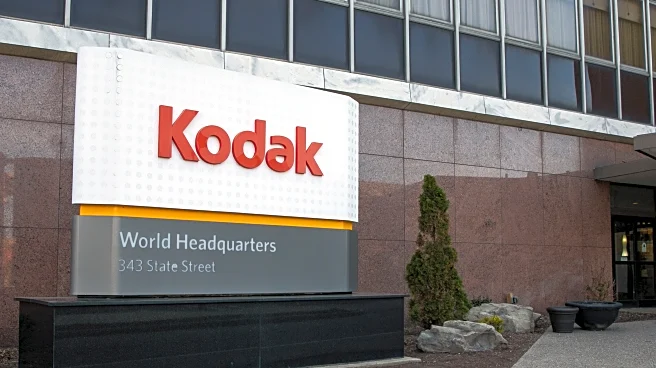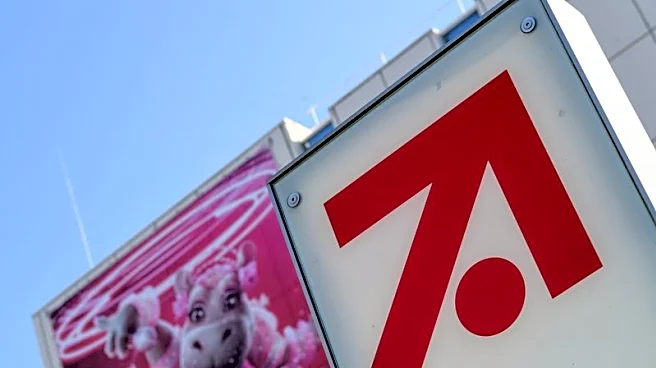What's Happening?
Kodak has announced its strategy to address its financial obligations and avoid potential shutdown. The company is confident in its ability to pay off a significant portion of its term loan before it becomes due. Kodak plans to amend, extend, or refinance its remaining debt and preferred stock obligations. A key part of this strategy involves drawing on approximately $300 million expected from the reversion and settlement of its U.S. pension fund, known as the Kodak Retirement Income Plan (KRIP), anticipated in December. However, the completion of the KRIP reversion is not entirely within Kodak's control and is not considered 'probable' under U.S. GAAP accounting rules, which has led to a 'going concern' warning. Kodak asserts that once the KRIP reversion is completed, it will be virtually net debt-free, resulting in a stronger balance sheet than it has had in years.
Why It's Important?
Kodak's financial maneuvering is crucial for its survival and future operations. Successfully managing its debt obligations could stabilize the company, allowing it to focus on its core business and potentially invest in new ventures. The reliance on the KRIP reversion highlights the importance of pension fund management in corporate financial strategies. If Kodak can achieve a net debt-free status, it may regain investor confidence and improve its market position. However, the uncertainty surrounding the KRIP reversion poses a risk, as failure to secure these funds could lead to financial instability or even bankruptcy. This situation underscores the broader challenges faced by companies with significant legacy obligations and the need for strategic financial planning.
What's Next?
Kodak will continue to work towards completing the KRIP reversion by December. The company may also explore alternative financing options to ensure it can meet its debt obligations if the reversion does not proceed as planned. Stakeholders, including investors and creditors, will closely monitor Kodak's financial health and strategic decisions. The outcome of these efforts will likely influence Kodak's operational capabilities and market performance in the coming years.













